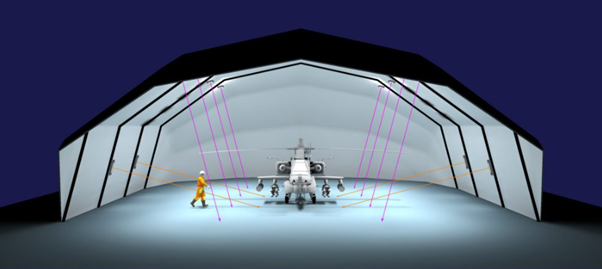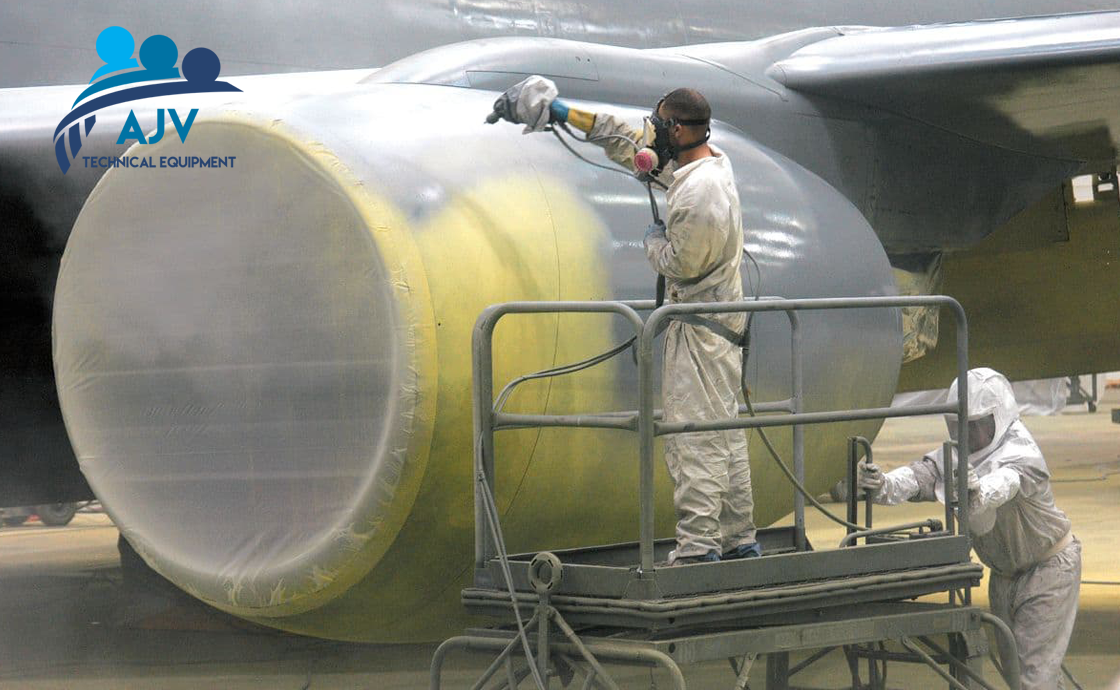Aviation accidents and crashes often make headlines owing to the severity of the disaster. However, aircraft hangars, a place where aircraft are stored and maintained, can also be hazardous.
There are several reports of technicians being crushed between hangar doors, accidental falls from platforms and ladders during maintenance work, mishaps on the ground, discharge of fire foam systems etc. Hence, safety precautions play a pivotal role in aircraft hangar facilities.
When we speak of aircraft hangar safety, there are two aspects to it:
- Risk to aircraft that can lead to huge financial damages
- Risk to technicians, engineers and workers at the hangar
International Business Aviation Council (IBAC) and the National Air Transportation Association (NATA), have designed a safety management system for business aviation ground handlers.
They stipulated a list of global best practices to be followed by the ground staff in order to ensure the safety of the aircraft as well as human safety. According to their report, most accidents at aircraft hangars occur during towing, equipment handling, hangar movement, and ramp movements.
Here are some of the safety measures that should be kept in mind:
Administrative procedures
Administrative processes and procedures ensure smooth functioning in a busy zone such as that of an aircraft hangar. Engineers, technicians and workers understanding of what’s expected of them, open communication between the ground staff and in-flight staff through proper communication channels, and addressing workers’ concerns can go a long way in eliminating chaos and thereby averting major accidents.
Platforms
Aircraft are huge and their maintenance requires regular use of platforms and ladders. Technicians and engineers have to inspect the coatings and look for damages to the aircraft structure. According to a survey carried out by a UK-based organization, several height-related accidents are reported every year to the UK Health and Safety Executive (HSE). The survey found that in the UK, between 2012 to 2017, 28 percent of fatal injuries or an average of 40 fatal injuries per year were due to falls from height. Not only is this dangerous for the workers, but also for the employer because if the employer fails to offer proper training, quality equipment, regular inspections and careful monitoring, they will be held responsible for the accident and can incur financial damages.
Platforms or height-related mishaps can be reduced by implementing:
- Proper planning
- Careful monitoring
- Worker training
- Regular inspection of equipment
Lighting
Repair and maintenance of sophisticated machines such as aircraft is high-precision work. the workplace should be adequately illuminated so that the ground staff does not have to compromise on visibility. Also, hangars have a plethora of cables, tools, and equipment on the floor and tripping accidents are not uncommon. Brightly lit spaces, therefore, are a necessity. Additionally, aircraft hangars store chemicals that are flammable and can lead to fire and explosion. Explosion-proof LED lights that are specially designed for hazard zones, should be used. There are safety standard requirements for inspection and maintenance work and in order to meet that, the lights should be designed for high mounting heights, high lux levels and uniform lighting over a large area. Our article, What is Explosion Proof Lighting, can help you gain a better understanding of these kinds of lighting fixtures.
An implementation of lighting design for aircraft hangars
In a typical bay lighting project, SPARTAN High Power Bay units have been designed into multiple Helicopter Hangers to provide powerful ceiling mounted illumination. The was based on a requirement for Zone 1 fittings to achieve 300 lux on the task area from 8m high.

Using fewer luminaires was an important design factor in this application which meant each luminaire had to deliver as much light as possible. We were restricted in where the luminaires could be mounted, so using a smaller number of units with a wide 90×90° beam angle meant that over 350 lux could be achieved while maintaining good uniformity. In addition, the crisp, cool-white LED colour temperature ensures excellent visibility. The convenient ceiling mount bracket is also perfectly compatible with a wide range of mounting configurations.
Raytec LED Linear fittings with battery backup were also wall mounted at 2m high to provide 25 lux of lighting in emergency conditions.
You can find more information about our aircraft hangar lighting equipment and design at our product pages.
Chemicals
Hazardous materials such as lubricants, paints, fuels and other chemicals are found and used in an aircraft hangar. These should be stored and properly recorded and labelled.
Chemical leakages or improper use of flammable materials can lead to fatal fire incidents resulting in loss of lives and goods.
Fire Safety mechanism
Like any other hazardous workplace, a concrete fire safety mechanism should be in place to thwart or minimize fire-related accidents. This should include the installation of
- Smoke & Flame Detectors
- High Expansion Foam Generators
- Quick Response Sprinklers
- A/V Alarms & Switches
- FoamPak Foam Pumping Station
- Fire Alarm & Suppression Control Panels
- Foam Tanks
Installations should be followed up by regular maintenance and inspection.
Worker Training and use of PPEs and other safety gears
Worker training is an important part of aircraft hangar safety. From highly precise repair and maintenance work to day-to-day activities, workers and technicians should be highly trained to carry out their responsibilities. They should be adept at handling time pressures, especially during aircraft turnaround. Aircraft hangars have mechanised devices, hangar doors, ramps etc. The trained workers should follow proper procedures related to the handling of such devices and mechanisms in order to avoid fatal accidents. Hard hats, bump caps, safety glasses, face shields, rubber gloves and boots should be used if and when required depending on the level of exposure or complexity of the job.
Aircraft hangars house expensive jets and aeroplanes. Keeping them safe and ensuring the safety of the workers is beneficial to both the employees and the employers. Disasters can easily be avoided if the industry standards are followed, quality equipment is used, regular inspections and risk assessment are undertaken, workers are regularly trained, and the hangar is made conducive for precision work by properly illuminating the workspace, storing chemicals, installing fire safety devices etc.

